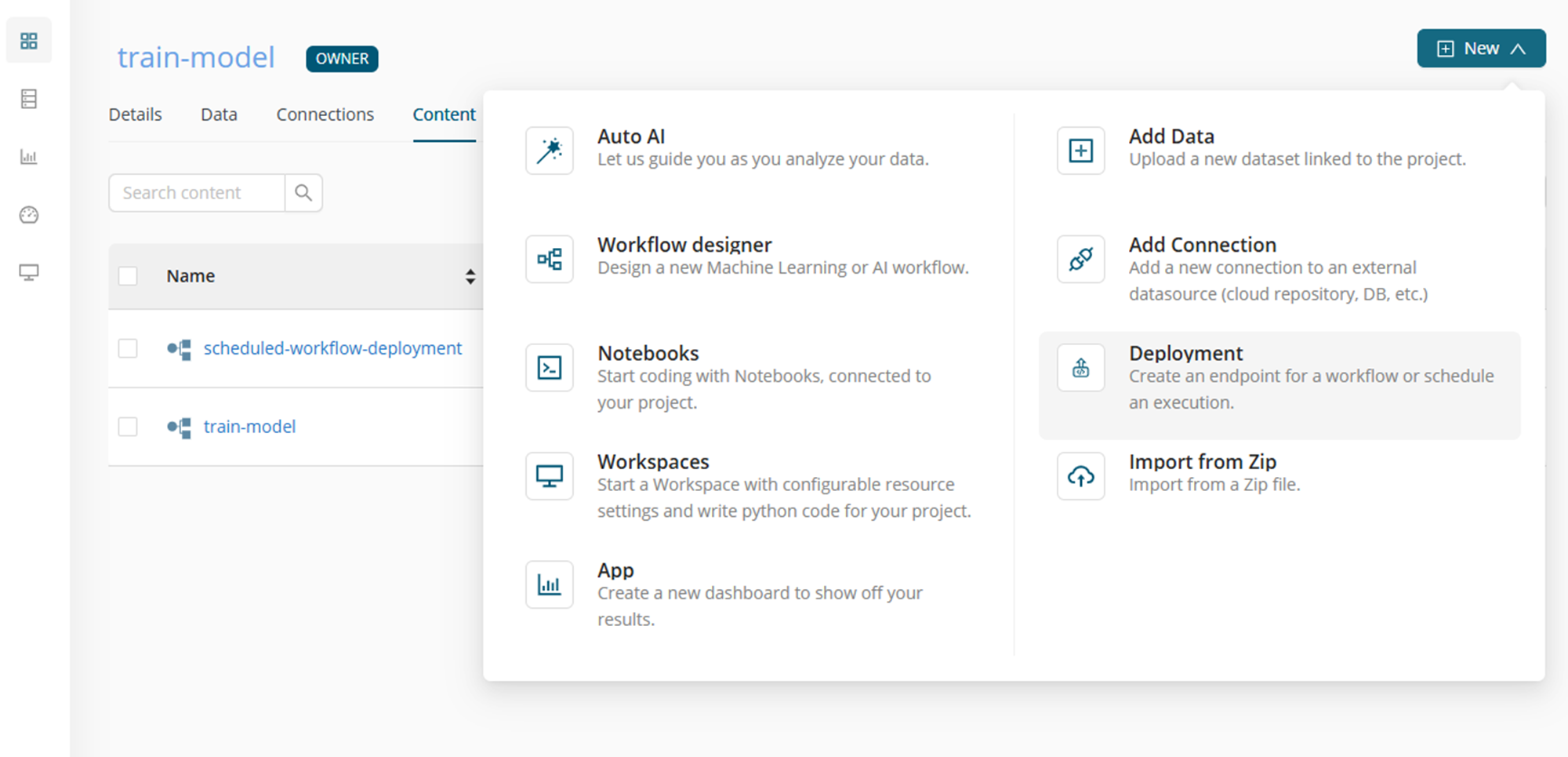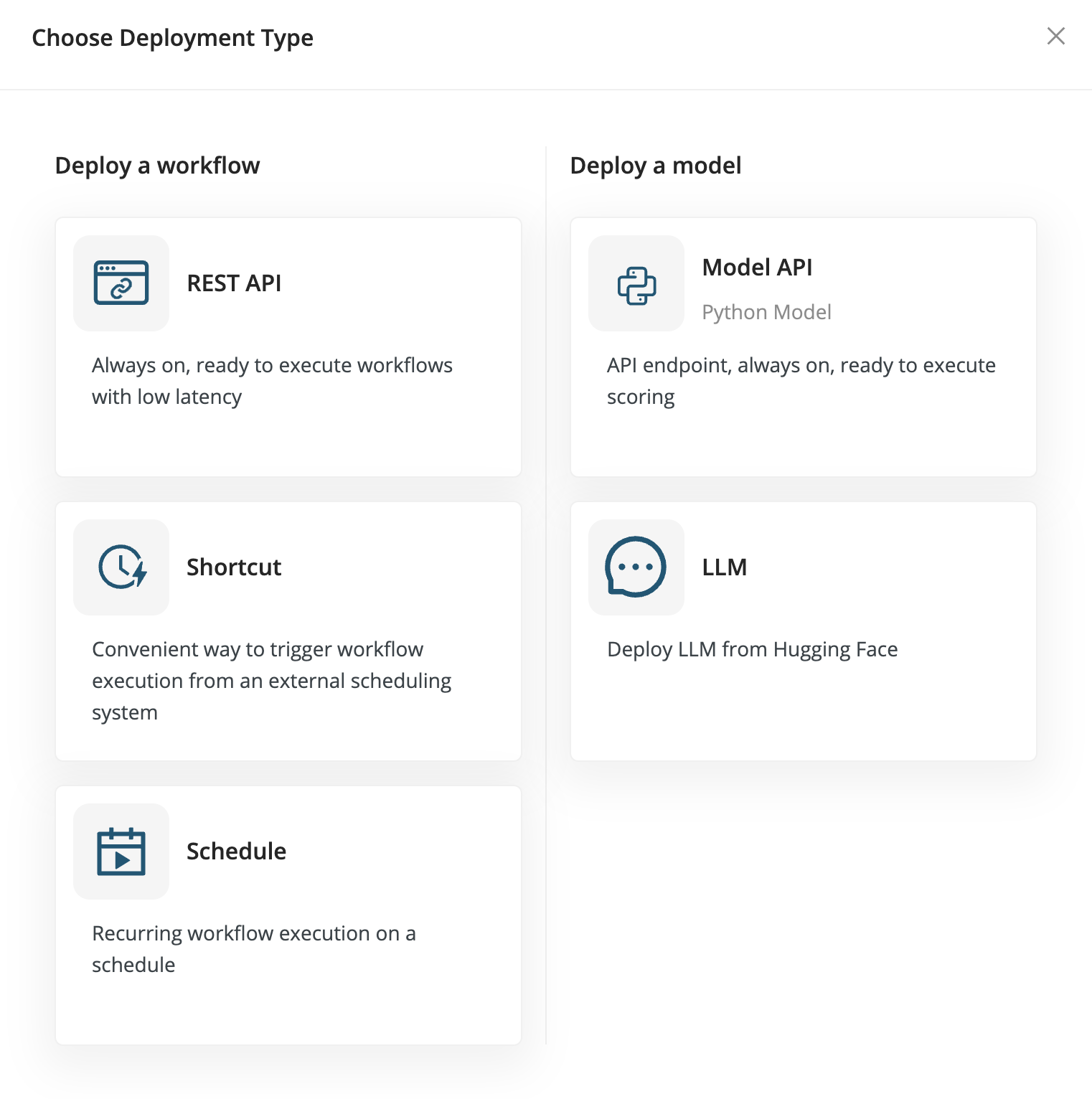Deploy a project
What is a deployment?
We broadly define deployment as embedding content created within a project and embedding it into an existing (or new) business process. Here are some examples for these:
- generating a weekly report and emailing it to stakeholders
- periodic data ingestion and cleaning
- publishing a predictive model on a REST endpoint and integrating it with another application which implements certain business objectives
- creating a dashboard to visualize periodically refreshed KPIs and displaying them on a large screen on a factory floor
Once such content (workflows, models, notebooks, etc.) has been created, deployment should be a logical next step to ensure that the project generates continuous business value to the enterprise.
Create a deployment
To create a new deployment for your workflow, take one of the following two steps:
-
From within the Content tab of your project, under Actions, click on the Deploy icon for your workflow

-
or, click on New in the upper right corner, and choose Deployment

Deployment types
Before creating a deployment, you should consider your purpose:
-
To present data, models or other results as a convenient dashboard, use Panopticon.
-
To expose a workflow as a REST endpoint that is always ready to serve requests with low latency, choose REST API.
-
In case you have workflows which are longer running, and you need a convenient way to trigger an execution (either manually, or by any third party orchestration tool), choose Shortcut.
-
To run a workflow periodically on a schedule, choose Schedule.
-
To deploy a Python model, choose Model API.
-
To deploy a Large Language Model (LLM) from Hugging Face, choose LLM.
